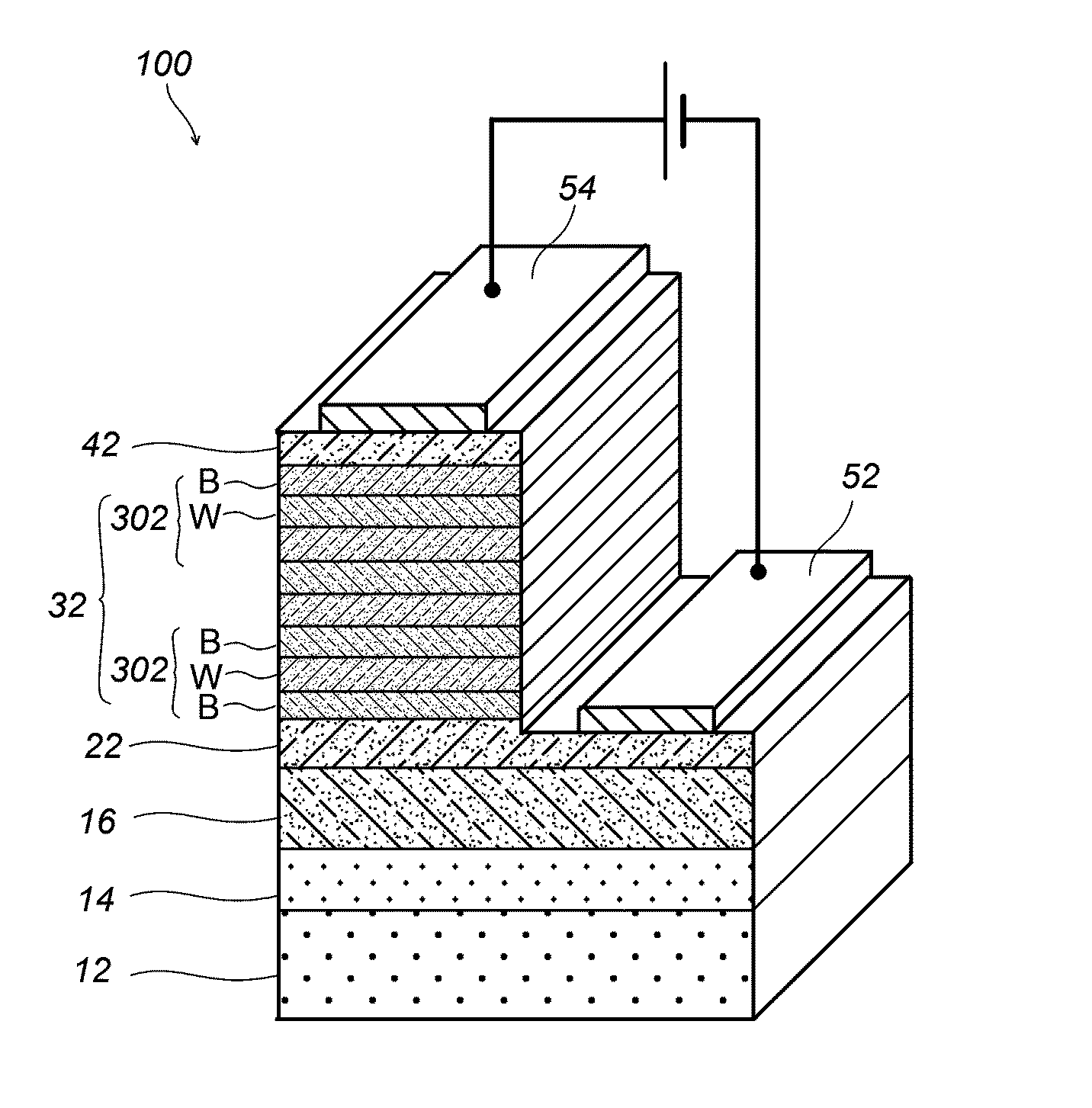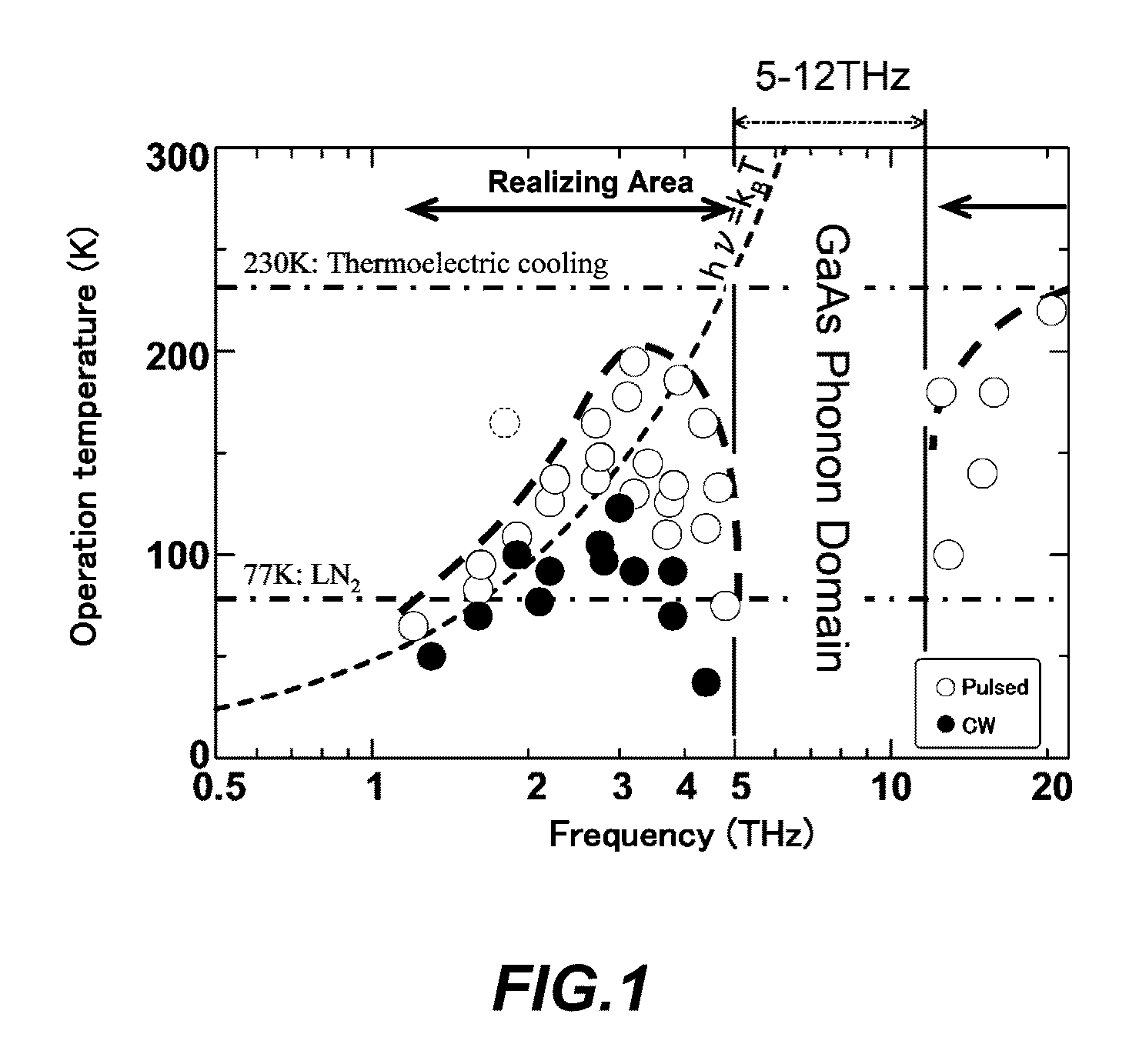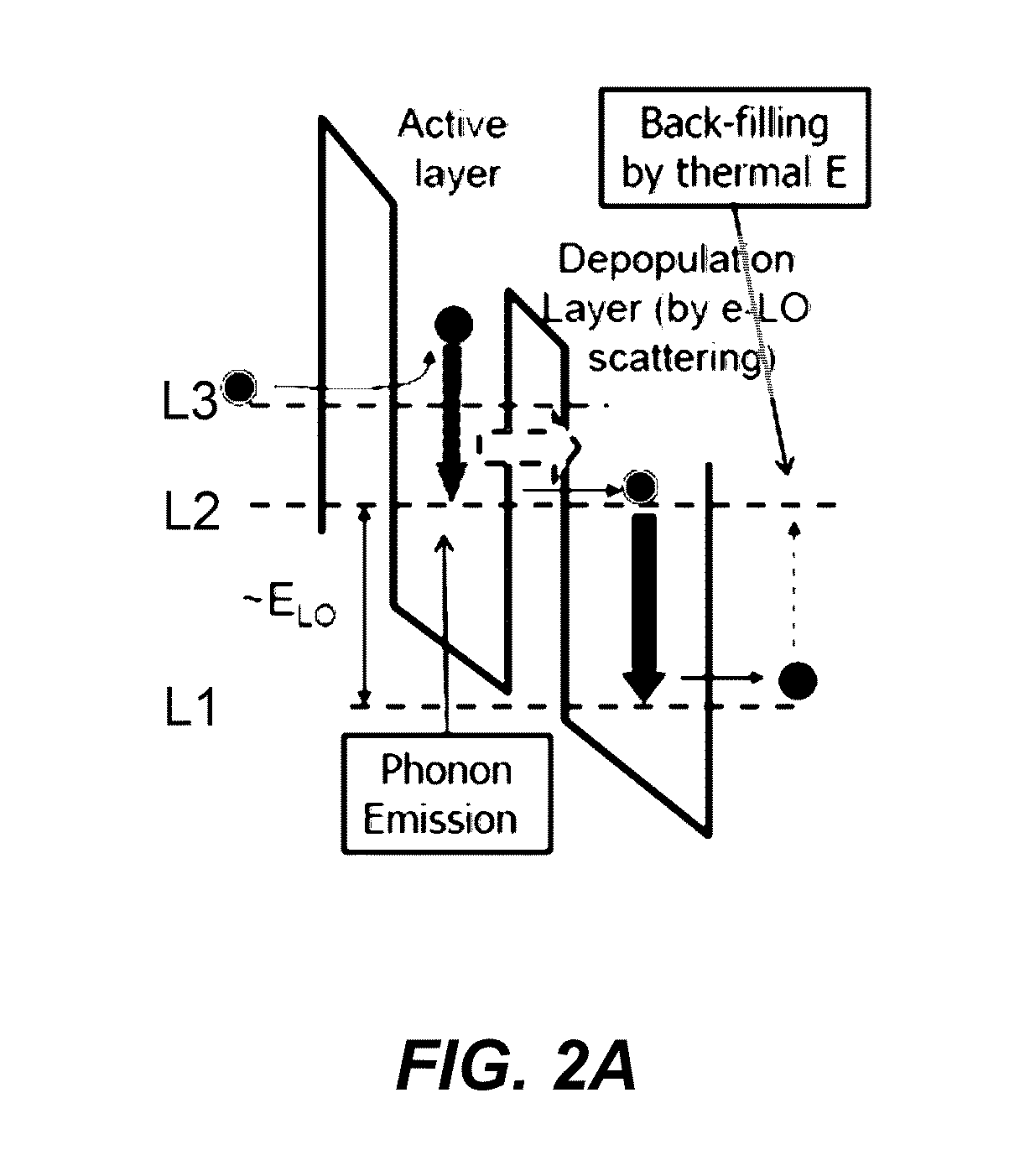Nitride semiconductor quantum cascade laser
a quantum cascade laser and semiconductor technology, applied in semiconductor lasers, laser details, electrical equipment, etc., can solve the problems that thz-qcl has not been realized as intended, and achieve the effect of facilitating lasing operation
- Summary
- Abstract
- Description
- Claims
- Application Information
AI Technical Summary
Benefits of technology
Problems solved by technology
Method used
Image
Examples
embodiment 1
2. Embodiment 1
[0090]In an embodiment reflecting the above findings, there will be realized a structure of levels, or sub band structure, that enables operation at an intended lasing frequency.
[0091]2-1. Lower-Level-Light-Emission Pure-Three-Level Structure
[0092]In the spontaneous emission operation in the experiment of the above-mentioned four quantum well structure, the frequency was not intended one. However, at the same time, the experiment gives a direct finding about a structure that facilitates light emission in that light emission by the spontaneous emission was actually obtained. That is, from the above experimental result, it can be useful to select levels that participate in light emission directly or indirectly (an upper lasing level and a lower lasing level) among levels that have lower energy values in each well layer. In addition, the fact that electrons were injected from the level L3 to the upper level in the actual light emission, the level L2 in FIG. 4, by the LO-...
embodiment 2
3. Embodiment 2
[0139]In Embodiment 1 mentioned above, the pure-three-level structure of the lower-level light emission type or the upper-level light emission type is described. The two quantum well structure being a simple configuration has been employed there, and the number of levels participating in the light emission has been limited to three. However, with an appropriate design and an ensured precision in fabrication in accordance with such design, it is possible to employ an advanced structure in exchange for sacrificing the simplicity. The advancement at that point aims at the enhancement of reliability of population inversion. In Embodiment 2 of the present application, the transport and the depopulation of electrons described in Embodiment 1 in conjunction with the action of the mediation level, which are separate actions targeting separate levels, are allocated to dedicated levels. Since the number of levels is increased by one, this sub band structure is referred to as a ...
embodiment 3
4. Embodiment 3
[0142]In addition to Embodiments 1 and 2 mentioned above, it is useful to employ, in exchange for further complication, a further advanced structure to enhance the reliability of population inversion. In an embodiment, in addition to the transport level and the depopulation level described in an embodiment (the pure-four-level structure), a level called an injection level is formed between the transport level and the upper lasing level. The structure of this super lattice has a three quantum well structure that is similar to that in an embodiment, called an indirect pumping promoting type. In an embodiment, this indirect pumping promoting type is employed.
[0143]FIGS. 27A,B are graphs of calculation results showing positional dependence of electric potential, and an electron probability distribution calculated from the wave function of each sub band, in the structure of a THz-QCL with which a lasing frequency can be obtained at around 6 THz. The upper lasing level and ...
PUM
 Login to View More
Login to View More Abstract
Description
Claims
Application Information
 Login to View More
Login to View More - R&D
- Intellectual Property
- Life Sciences
- Materials
- Tech Scout
- Unparalleled Data Quality
- Higher Quality Content
- 60% Fewer Hallucinations
Browse by: Latest US Patents, China's latest patents, Technical Efficacy Thesaurus, Application Domain, Technology Topic, Popular Technical Reports.
© 2025 PatSnap. All rights reserved.Legal|Privacy policy|Modern Slavery Act Transparency Statement|Sitemap|About US| Contact US: help@patsnap.com



